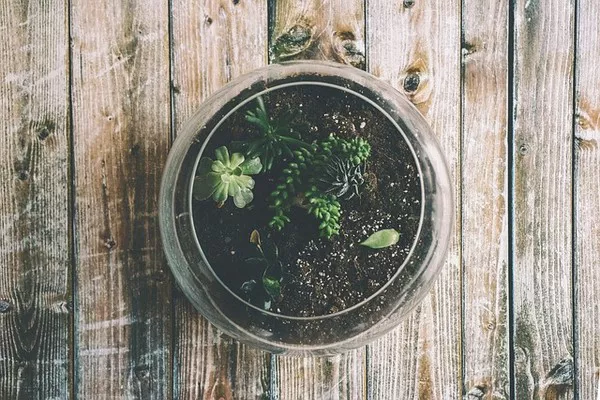Succulents have captured the hearts of many indoor plant enthusiasts due to their unique appearance, low maintenance requirements, and ease of propagation. Propagating succulent leaves is an exciting and rewarding process that allows plant lovers to expand their collection and share the beauty of these resilient plants with others. In this article, we will delve into the art of propagating succulent leaves, exploring the various methods, best practices, and key tips for ensuring successful propagation.
Understanding Succulent Propagation
Propagating succulents from leaves involves creating new plants from the parent plant’s leaves. Succulents have the remarkable ability to generate new roots and shoots from individual leaves, making them ideal candidates for propagation. This process is akin to cloning, as the new plants retain the genetic characteristics of the parent plant.
Method 1: Leaf Cuttings
Leaf cuttings are the most common and straightforward method of succulent propagation. Follow these steps for successful leaf propagation:
1.Select a healthy leaf: Choose a mature and healthy leaf from the parent plant. Gently twist the leaf off the stem to ensure you get the entire leaf intact.
2. Allow the leaf to callus: After removing the leaf, place it on a dry surface or paper towel and let it sit for a day or two. This step is crucial, as it prevents the cut end from absorbing excess moisture during planting, reducing the risk of rot.
3. Prepare the potting mix: Use a well-draining potting mix suitable for succulents. A mix of cactus soil and perlite or sand is ideal. Fill a small container with the potting mix, ensuring it is slightly damp but not soggy.
4. Plant the leaf cutting: Gently press the cut end of the leaf into the soil, burying only about a quarter of the leaf. Place the container in a bright location with indirect sunlight.
5. Water sparingly: Water the leaf cutting lightly, keeping the soil slightly moist but not overly wet. Overwatering may lead to rot.
6. Patience is key: It may take several weeks to a few months for the leaf cutting to develop roots and new baby plants (pups).
Method 2: Leaf Division
Some succulents have leaves that naturally split, revealing tiny plantlets at the edges. This process is known as leaf division and is more common in species like Kalanchoe and Echeveria. To propagate through leaf division, follow these steps:
Identify a suitable leaf: Look for a mature leaf that has started to produce plantlets along its edges.
Remove the leaf carefully: Gently detach the leaf from the parent plant, ensuring you get the attached plantlets intact.
Plant the leaf and plantlets: Prepare a well-draining potting mix, and position the leaf and attached plantlets on the soil. Make sure the plantlets are in contact with the soil. Water sparingly, and place the container in a bright location with indirect sunlight.
Monitor growth: The plantlets should take root and grow into new individual plants over time. Be patient, as this process may also take a few weeks to a few months.
Method 3: Beheading
Beheading is a method used for taller succulents or those with elongated stems. It involves removing the top portion of the plant, which can then be propagated as a separate entity. Beheading is ideal for propagating succulents that may have become leggy or damaged. Here’s how to do it:
Identify the point of beheading: Locate a healthy section of the stem that you want to remove. Use a clean, sharp knife or scissors to make a clean cut across the stem.
Allow the cutting to callus: As with leaf cuttings, let the cut end of the stem callus for a day or two before planting.
Plant the cutting: Insert the cut end of the stem into a well-draining potting mix. Water sparingly and place it in a bright location with indirect sunlight.
New growth: The stem cutting should develop new roots and shoots over time, giving rise to a new succulent plant.
Key Tips for Successful Succulent Propagation
Choose healthy plants: Propagate leaves from healthy parent plants with no signs of disease or stress to increase the chances of success.
Patience and persistence: Propagation can take time, so be patient and maintain consistent care for your propagating succulents.
Avoid overwatering: Succulents are adapted to survive in arid conditions, so be cautious not to overwater them. Allow the soil to dry out between watering sessions.
Provide the right environment: Succulents prefer bright, indirect sunlight. Avoid exposing the young propagations to direct sunlight, as it may lead to sunburn.
Use well-draining soil: Succulents thrive in soil that provides excellent drainage. Amend regular potting soil with perlite, sand, or pumice to improve drainage.
Conclusion
Propagating succulent leaves is a fascinating and rewarding way to expand your succulent collection and share your favorite plants with friends and family. Whether through leaf cuttings, leaf division, or beheading, understanding the different propagation methods and implementing best practices will increase the chances of success. By providing the right care and environment, you can enjoy the satisfaction of nurturing new life from individual succulent leaves, further deepening your appreciation for these remarkable plants. Happy propagating!


